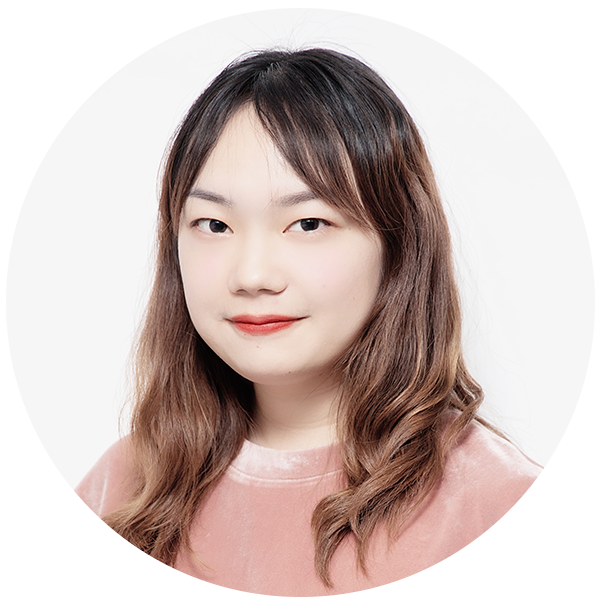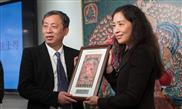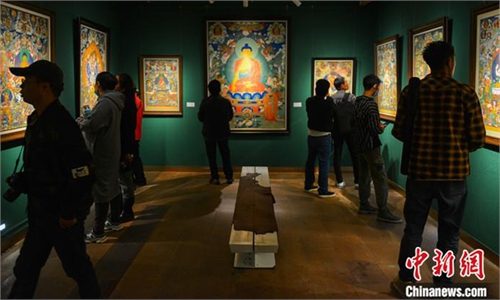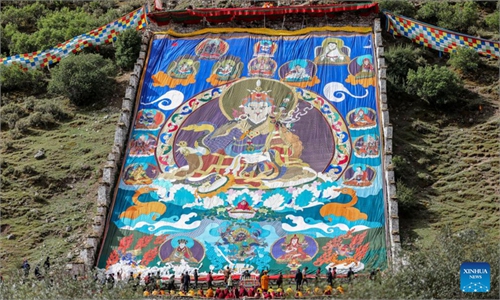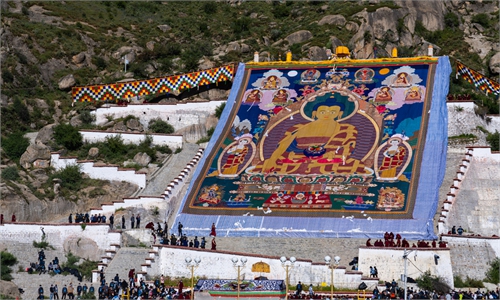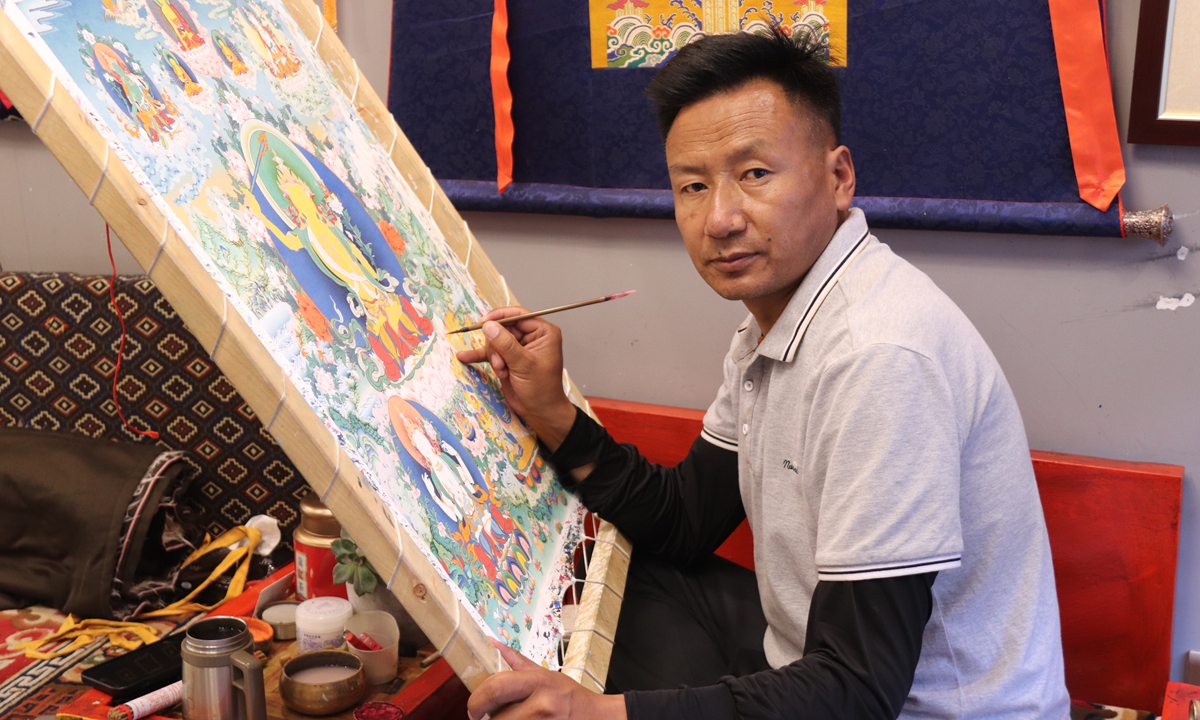
Thangka painter Phurbu Tsering is working on a new drawing. Photo: Cao Siqi/Global Times
In the famous bustling bazaar in Lhasa, Southwest China's Xizang (Tibet) Autonomous Region lies Bakuo Street, known to Tibetans as the "Holy Road," where visitors can see exquisite studios dedicated to the various schools of Thangka - traditional Tibetan Buddhist paintings on cotton or silk appliqué. At one studio, 48-year-old Thangka painter Phurbu Tsering is working on a new drawing attentively.
Phurbu Tsering's studio is more than 20 years old, making it probably the oldest one on the street. As he measures a sketch on a new canvas, bright rays of sunshine light up his staid face.
"I am drawing one of 15 sets of Thangka paintings for a temple. It takes me around two months to finish one," Phurbu Tsering told the Global Times. A ray of sunlight slips through his studio's window and falls on one of his works, causing the golden lines around the Buddhist deities shine with halos of light.
Thangka paintings originated more than 1,300 years ago. They were traditionally kept unframed and rolled up when not on display. The themes depicted in Thangka are mostly about Buddhism, legends and folk tales or historical stories.
Opinions vary as to the origins of Thangka. It is believed that Thangka originated from Indian cloth paintings and folk hanging pictures. Since the art form's introduction to Xizang in the 9th century, Thangka painters have absorbed the culture of China's Central Plains and the painting techniques of Nepal and India, forming a unique style of painting depicting the history, politics, culture and social life of Tibetans.
For the centuries, Thangka art was the work of laymen, but this situation changed after the central government and Xizang local government enhanced protection of the cultural heritage. In 2006, it was inscribed to China's National Intangible Cultural Heritage List. A number of national-level and regional-level Thangka artists, including Phurbu Tsering, were named across the Xizang region to protect the visionary asset. 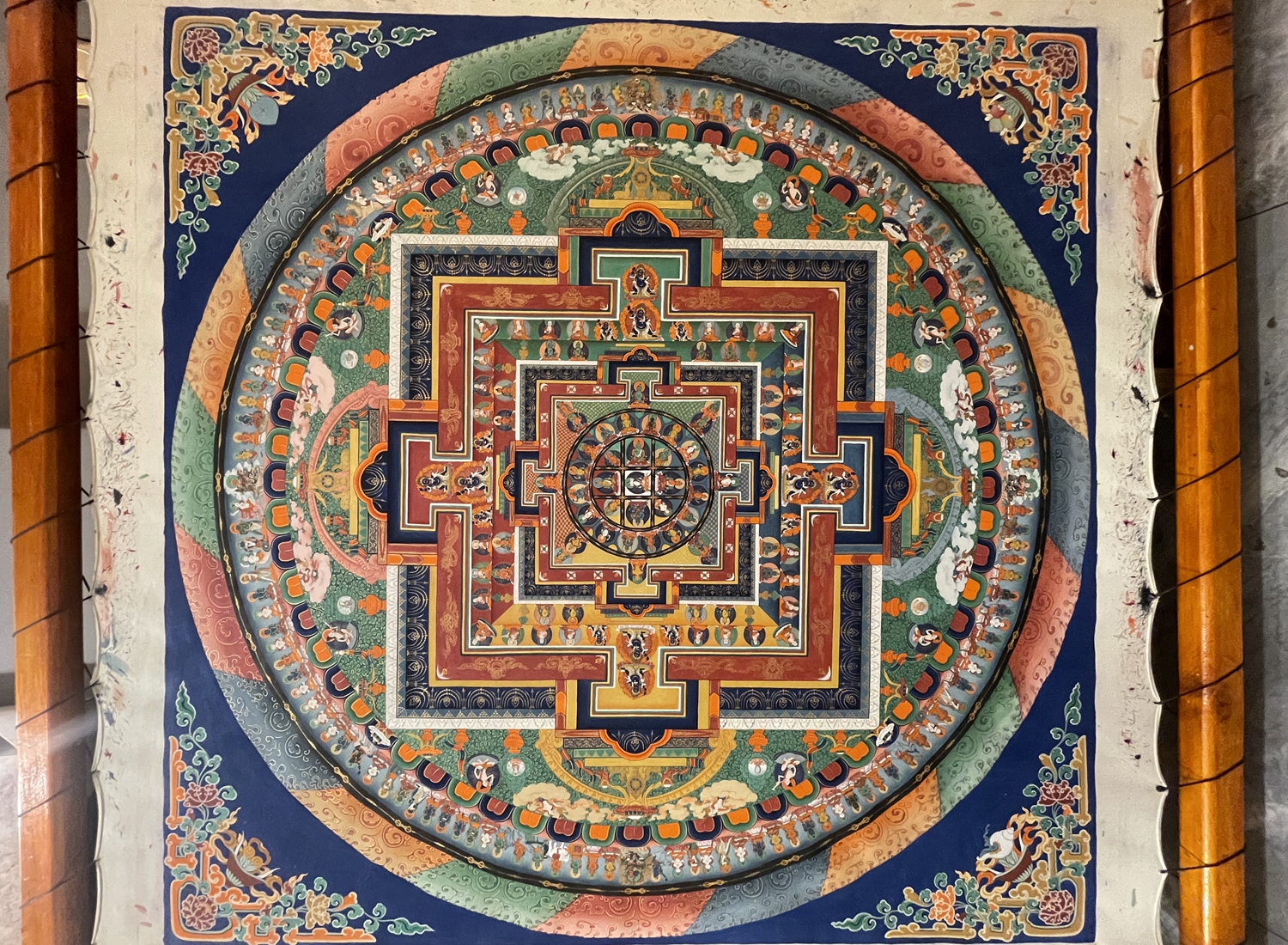
A Thangka painting by Phurbu Tsering Photo: Courtesy of Phurbu Tsering
Surviving the ages
Influenced by his parents, Phurbu Tsering has been fond of painting since childhood. At the age of 13, he dropped out of middle school and came to Lhasa to learn how to paint Thangka under the guidance of Jampel Wangchug, the famous eighth-generation painter of the highly respected Miantang School.
"According to production method, Thangka can be divided into six categories: painted Thangka, surface-embroidered Thangka, Thangka embroidery, printed Thangka, cotton Thangka and Kesi Thangka. For thousands of years, Thangka has been divided into different schools, the more well-known schools are Miantang, Chinze, Kamagazi and Miansa," Phurbu Tsering explained.
According to Phurbu Tsering, the process of making Thangka is complicated, with 12 steps that include gluing, polishing, drawing and coloring. Each step requires the artist to devote at least 12 minutes of attention.
"The reason why Thangka is valuable is that the pigments are very special. All the pigments are taken from the earth, either precious minerals or rare plants, including gold, silver, agate and saffron, so that the color is bright and can survived the ages," he said.
Phurbu Tsering noted that a Thangka has religious significance only after it is illuminated by a lama, and it needs to be placed in a special Buddhist hall for worship.
"Some customers just collect Thangka as art, while others buy them to ward off evil spirits and keep themselves safe," he said.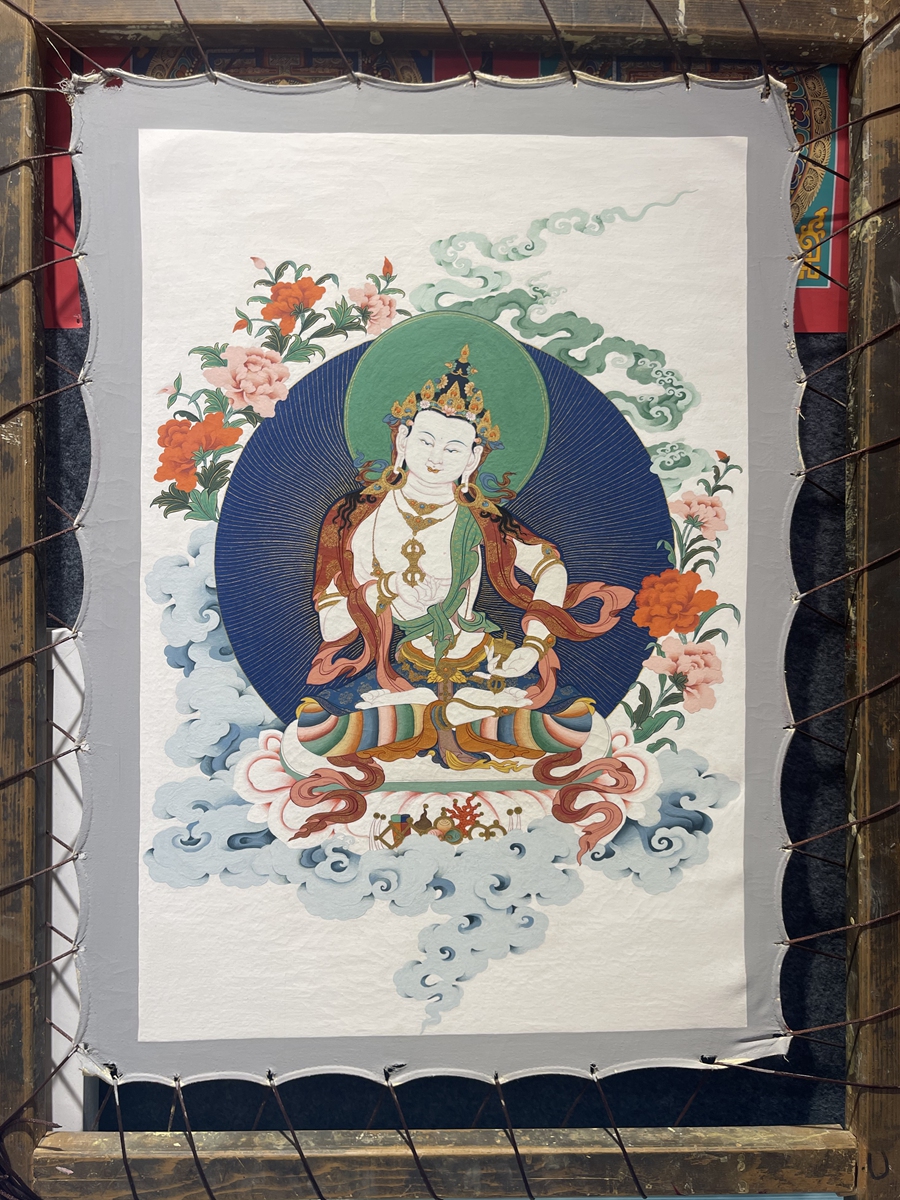
A Thangka painting by Phurbu Tsering Photo: Courtesy of Phurbu Tsering
Passing on tradition
The latest data shows that there are more than 3,000 Thangka artists in the Xizang region and more than 10,000 people in Thangka-derivative industries across cities like Lhasa, Shigatse and Qamdo. The annual average market value of the Thangka industry in Xizang currently exceeds 200 million yuan ($29 million), making it an important industry for both the protection and development of this traditional heritage.
Tibet University became the first school in China to offer a Thangka major.
"From 300 to roughly 3,000, the rise in the number of Thangka painters in Xizang shows that religious art is thriving and a perfect example of the government's support of Tibetan culture," Norbu Sitar, dean of the Tibetan Thangka Painting Academy in Lhasa, told the Global Times.
"Thangka is not only thriving in China, but also drawing the attention of collectors in the US, the UK and Denmark," he said, adding that to prevent over-commercialization, Thangka inheritors are thinking of establishing a national standard for the industry.
Many of Phurbu Tsering's clients are from Japan and Germany and orders from cities in the eastern part of China have been surging in recent years.
So far, Phurbu Tsering is teaching six students free of charge. For the master, painting Thangka is more than a means to make a living, and it is an ideal he seeks to pass on to the next generation.
"My greatest achievement is to train more students to pass on Tibetan culture," he said.
Discussing accusations by overseas media that the Chinese government is diluting their culture and that Tibet is the victim of "cultural genocide," many Thangka masters in Lhasa the Global Times talked to shook their heads and said, "the numbers and our skills say everything."
